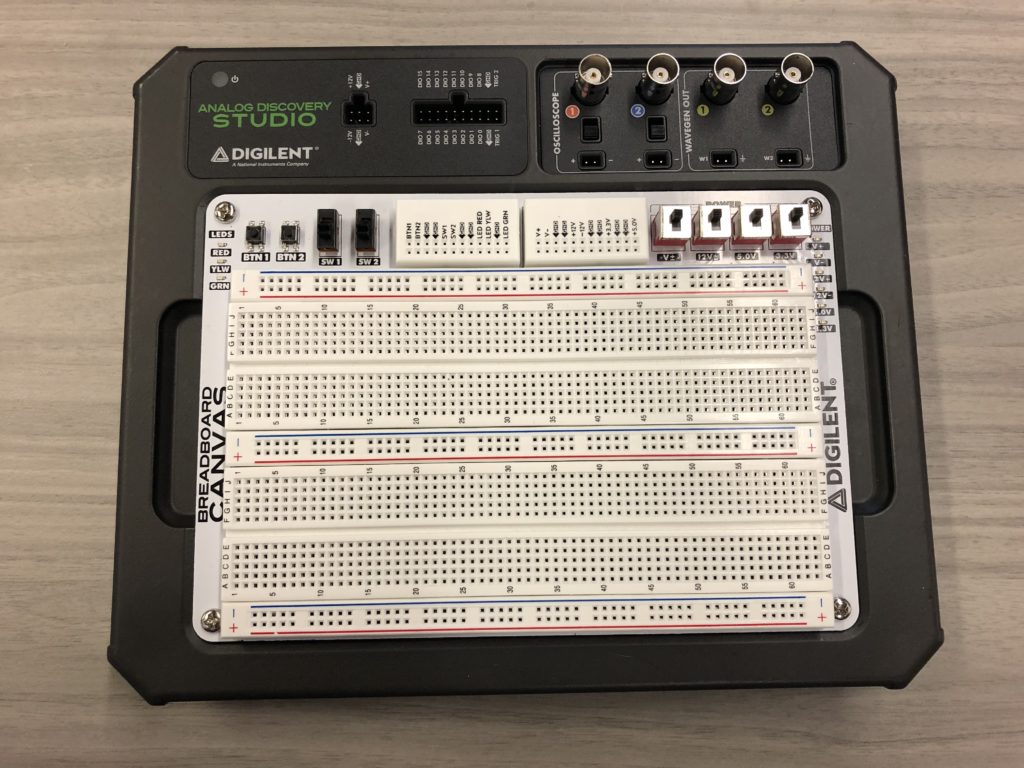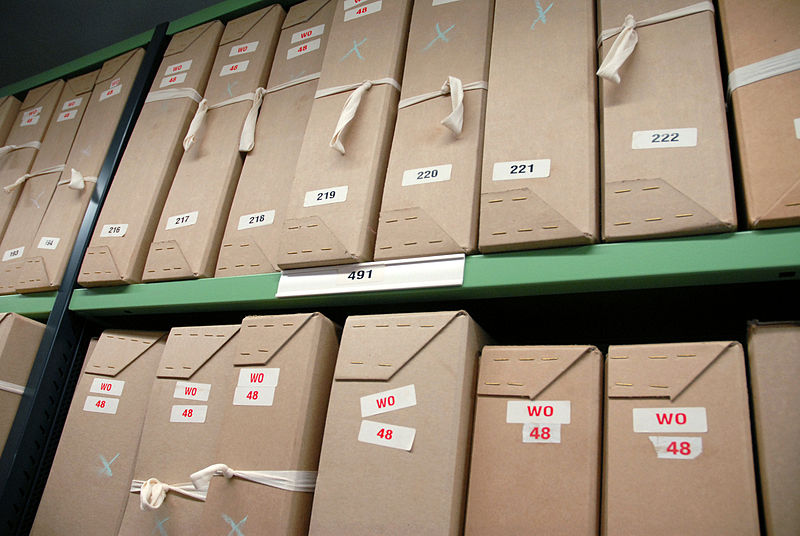The newest upcoming addition to the Discovery family, the Analog Discovery Studio, provides additional functionality to what’s already available with the acclaimed Analog Discovery 2, in a form that is not only portable but more powerful!

With increasing student enrollment, oftentimes already-limited lab space does not increase proportionally. So many institutions are turning to a studio learning approach to supplement traditional labs or provide hands-on lab experience where such a facility does not exist. For example, My Electrical Engineering path started at a Community College that did not have an electronics lab, but I had an instructor that brought in an Original Analog Discovery for each student, so that we could get hands-on experience with circuits while starting to learn circuit analysis theories and methods. The Analog Discovery Studio brings even more power (no pun intended) and functionality in the same way and can be used in any space with a desk and a power outlet.

Photo from here:
https://commons.wikimedia.org/wiki/File:Leadership_and_Power.jpg
An instructor can keep Analog Discovery Studio’s in a bin in a secure place, then bring them out when it is lab time, or have one available for office hours if students need additional help. In fact, that’s exactly what my professor did in Community College with the Original Analog Discovery. Further, tutoring centers can be easily equipped with an Analog Discovery Studio to provide learning assistance outside of class, lab, and office hours, and store the device in a convenient, secure spot. Hands-on learning no longer needs to be restricted to dedicated lab space.
The module itself is about 9 inches wide, 7.5 inches tall, and 1.5 inches deep, making it large enough to provide sufficient workspace, and small enough to fit in a backpack.

this repository shelving, except it would be way cooler because this
repository doesn’t turn into an electronics laboratory! Photo from here:
https://commons.wikimedia.org/wiki/File:Boxes_of_documents_on_repository_shelving_at_The_National_Archives.jpg h
In addition, the Canvas can be easily removed from the Analog Discovery Studio so a student can continue building a circuit at home without having to take the entire Analog Discovery Studio with them. As students wear out the canvas, it can be replaced without purchasing an entire new Analog Discovery Studio module. This also allows students to continue working on building circuits when it is convenient for them, without having to have the entire Analog Discovery Studio with them, whether that be at home, in the classroom, in a coffee shop, or any other available workspace.
So head over to the Digilent Store and order the Analog Discovery Studio, we are shipping out units as of today!


The studio seems over-priced to me. The Analog Discovery 2 and a breadboard provide all the functionality at a fraction of the price.
I do pop-up labs with 25 Analog Discovery 2s, which are far more compact than 25 Studios. The students carry their own breadboards, parts, and tools. (For that matter, the AD2s are cheap enough that the campus bought another 20 or so to rent to students for a quarter, so that students could continue to work at home, without needing the lab, and several students bought their own as well—altogether a much better deal than a Studio-based lab.)
Hi Kevin,
Thanks for your feedback!
If you’re looking purely for the instrument functionality and portability is a high priority then Analog Discovery is definitely your best bet.
However, if the interchangeable work surface of the Canvas, the integrated BNC’s, the power supplies, and the form factor is most important than Analog Discovery Studio is better suited. We designed it specifically from feedback from our academic customers on what they wish Analog Discovery 2 would have and so far they love it.